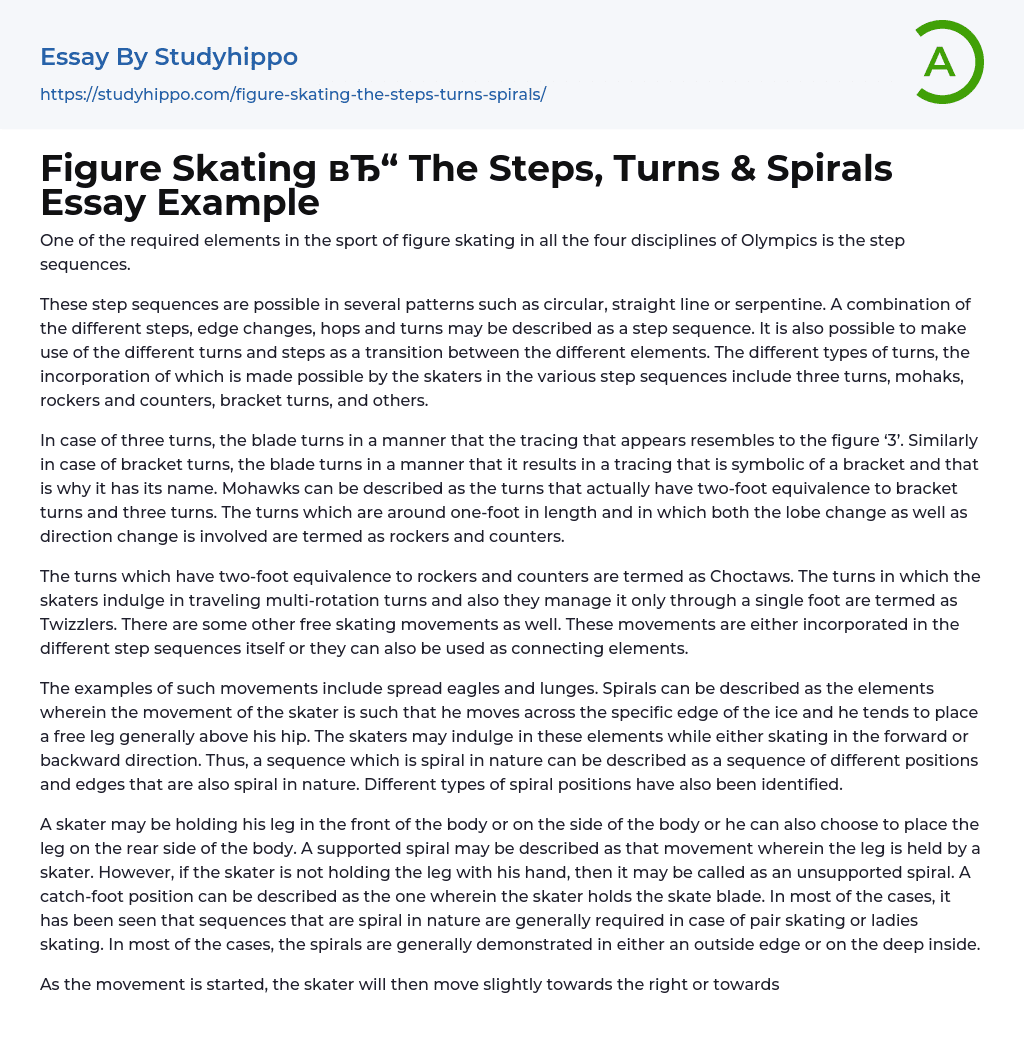One of the required elements in the sport of figure skating in all the four disciplines of Olympics is the step sequences.
These step sequences are possible in several patterns such as circular, straight line or serpentine. A combination of the different steps, edge changes, hops and turns may be described as a step sequence. It is also possible to make use of the different turns and steps as a transition between the different elements. The different types of turns, the incorporation of which is made possible by the skaters in the various step sequences include three turns, mohaks, rockers and counters, bracket turns, and others.
In case of three turns, the blade turns in a manner that the tracing that appears resembles to the figure ‘3’. Similarly in case of bracket turns, the blade turn
...s in a manner that it results in a tracing that is symbolic of a bracket and that is why it has its name. Mohawks can be described as the turns that actually have two-foot equivalence to bracket turns and three turns. The turns which are around one-foot in length and in which both the lobe change as well as direction change is involved are termed as rockers and counters.
The turns which have two-foot equivalence to rockers and counters are termed as Choctaws. The turns in which the skaters indulge in traveling multi-rotation turns and also they manage it only through a single foot are termed as Twizzlers. There are some other free skating movements as well. These movements are either incorporated in the different step sequences itself or they can also be used as connecting elements.
The examples
of such movements include spread eagles and lunges. Spirals can be described as the elements wherein the movement of the skater is such that he moves across the specific edge of the ice and he tends to place a free leg generally above his hip. The skaters may indulge in these elements while either skating in the forward or backward direction. Thus, a sequence which is spiral in nature can be described as a sequence of different positions and edges that are also spiral in nature. Different types of spiral positions have also been identified.
A skater may be holding his leg in the front of the body or on the side of the body or he can also choose to place the leg on the rear side of the body. A supported spiral may be described as that movement wherein the leg is held by a skater. However, if the skater is not holding the leg with his hand, then it may be called as an unsupported spiral. A catch-foot position can be described as the one wherein the skater holds the skate blade. In most of the cases, it has been seen that sequences that are spiral in nature are generally required in case of pair skating or ladies skating. In most of the cases, the spirals are generally demonstrated in either an outside edge or on the deep inside.
As the movement is started, the skater will then move slightly towards the right or towards the left and he ensures to go ahead with a spiral pattern around the ice.
- Fight club essays
- Training essays
- Athletic Shoe essays
- Gym essays
- Yoga essays
- Baseball essays
- Basketball essays
- Bodybuilding essays
- Boxing essays
- Football essays
- Golf essays
- Martial Arts essays
- Soccer essays
- Tennis essays
- Volleyball essays
- badminton essays
- cricket essays
- go kart essays
- hockey essays
- scuba diving essays
- snowboarding essays
- wrestling essays
- Surfing essays
- Swimming essays
- Table tennis essays
- Athletes essays
- Running essays
- Ski essays
- American Football essays
- Super Bowl essays
- Taekwondo essays
- Olympic Games essays
- Motorcycle essays
- Benefits of Exercise essays
- Sportsmanship essays
- Virtual Reality essays
- Major League Baseball essays
- Catcher essays
- Jackie Robinson essays
- Kobe Bryant essays
- Anabolic Steroid essays
- The New Yorker essays
- National Football League essays
- Mixed Martial Arts essays
- John Locke essays
- 9/11 essays
- A Good Teacher essays
- A Healthy Diet essays
- A Modest Proposal essays
- A&P essays




